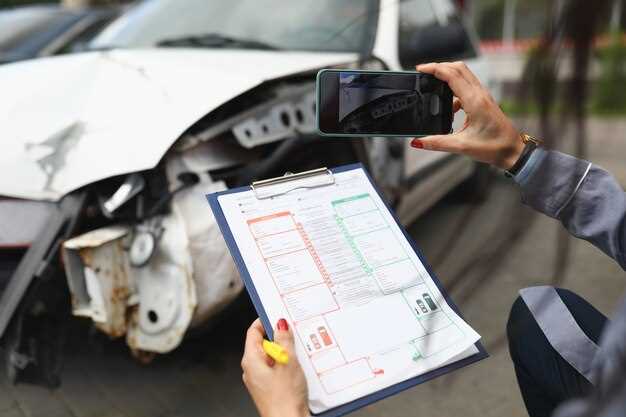
When considering the purchase of a used vehicle, ensuring its safety and reliability is paramount. One of the key factors in assessing a car’s condition is its accident history. Understanding whether a car has been involved in an accident can significantly influence your decision-making process and help you avoid potential issues down the road. By examining various reports and data sources, prospective buyers can make informed choices about their vehicle.
Accident history not only affects the structural integrity of a car but can also lead to increased maintenance costs in the future. Cars that have been involved in serious collisions may have hidden damage that isn’t readily visible. Thus, verifying a vehicle’s accident history becomes a crucial step in the car-buying journey. This article will outline effective methods for obtaining accurate reports and understanding their implications for safety and performance.
Additionally, learning how to navigate the plethora of resources available can empower you as a buyer. From online databases to vehicle history checks, knowing where to look and what to expect can save you both time and money. Ultimately, acquiring a vehicle with a clean accident history can provide peace of mind and a safer driving experience.
Using Vehicle History Reports to Check for Accidents
When considering a used vehicle, obtaining a vehicle history report is crucial for assessing its accident history. These reports provide valuable information that can help potential buyers make informed decisions and ensure their safety on the road.
Vehicle history reports compile data from various sources, including insurance companies, auto auctions, and repair shops. One of the primary benefits of these reports is their ability to reveal whether the car has been involved in any accidents. This information is often categorized into different levels of severity, ranging from minor fender benders to major collisions.
Buyers should pay particular attention to any consistent patterns in the vehicle’s accident history. For instance, a vehicle that has sustained multiple accidents may indicate ongoing issues related to its structural integrity or mechanical performance. In contrast, a car with a single minor incident might still be a reliable option if it has been properly repaired.
In addition to accident details, vehicle history reports often include other pertinent information such as title status, mileage discrepancies, and previous ownership records. This comprehensive overview allows buyers to assess the overall condition and reliability of the used vehicle.
To obtain a vehicle history report, many online services are available, some of which offer free basic reports while others require a fee for more detailed information. Popular providers include Carfax and AutoCheck, both of which are trusted sources for vehicle history information.
In conclusion, reviewing vehicle history reports is an essential step in verifying a car’s accident history. By using these reports, buyers can better understand potential risks, make safer choices, and ultimately enjoy a more satisfying vehicle ownership experience.
Identifying Red Flags in a Car’s Accident Record

When evaluating a vehicle’s accident history, it’s essential to scrutinize various reports for any warning signs that could indicate potential issues. One of the primary red flags is the frequency of accidents listed in the records. If a car has multiple incidents, especially severe collisions, it may suggest underlying problems or reckless driving behavior.
Another important aspect to consider is the severity of the accidents. Minor fender benders might not be concerning, but a record showing extensive damages or multiple airbag deploys raises alarms about the vehicle’s structural integrity. Such situations can affect the overall safety of the car.
The type of accidents documented also plays a crucial role. If a vehicle has been involved in accidents categorized as “total loss” or “salvage,” these are significant indicators of potential problems. Cars that have been declared a total loss often face extensive repairs that might not be fully disclosed in repaired reports.
It’s vital to pay attention to the locations and circumstances of the accidents. For example, if a car was involved in accidents primarily in high-traffic areas or during adverse weather conditions, it might indicate driving issues or risks associated with the vehicle itself.
Lastly, checking for any discrepancies between the reports and the seller’s account is essential. If the seller downplays or contradicts information found in the vehicle’s history reports, it could suggest a lack of transparency or honesty regarding the car’s background.
Steps to Obtain and Interpret Accident History Information

When considering used cars, it’s crucial to assess their accident history for safety reasons. Follow these steps to obtain and interpret accident history information effectively.
Step 1: Gather Vehicle Information
Before conducting any searches, collect essential details about the car. You will need the Vehicle Identification Number (VIN), make, model, and year of the vehicle. This information is vital for obtaining accurate reports.
Step 2: Choose a Reliable Reporting Service
Numerous services provide accident history reports. Options include Carfax, AutoCheck, and others. These platforms compile data from insurance companies, repair shops, and law enforcement agencies. Select a reputable service to ensure you receive comprehensive and accurate reports.
Step 3: Request the Accident History Report
Using the VIN, request the accident history report from your chosen service. Typically, there is a fee for accessing these detailed reports. Be prepared to enter the vehicle details to generate the report.
Step 4: Review the Report Thoroughly
The report will detail any accidents the car has been involved in, including the severity of damage and the date of each incident. Focus on specific points such as:
- The number of accidents recorded.
- Descriptions of damages.
- The extent of repairs performed.
Step 5: Interpret the Findings
Carefully consider the context behind each accident. A minor fender bender might not be a significant concern, while a serious collision may indicate underlying issues. Assess whether repairs have been conducted by qualified professionals and if any additional issues arise from the history.
Step 6: Cross-Reference with Other Sources
To validate the information obtained, cross-reference the report with other sources like state records or dealership disclosures. This can provide additional insight into the vehicle’s history and any potential hidden problems.
Step 7: Make an Informed Decision
After analyzing the accident history, consider how it affects your purchase decision. A clear history may affirm your interest, while a problematic history could lead to reconsidering or negotiating a lower price.




